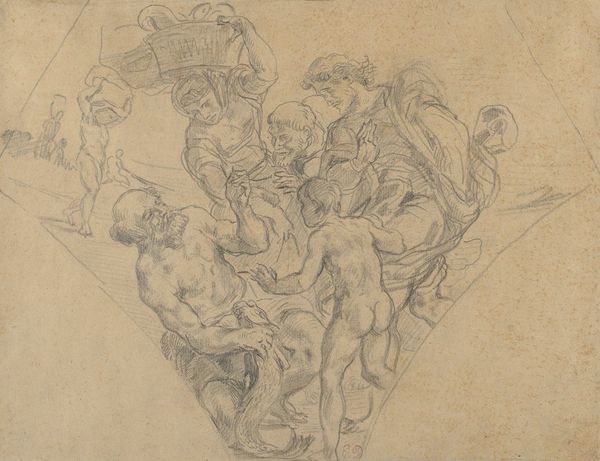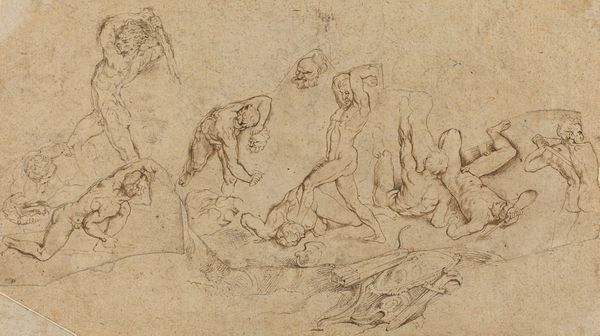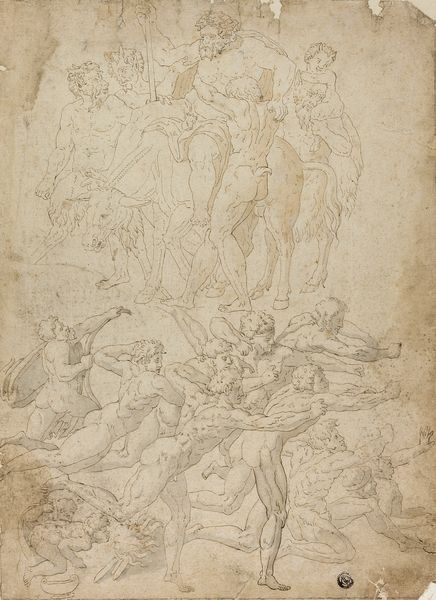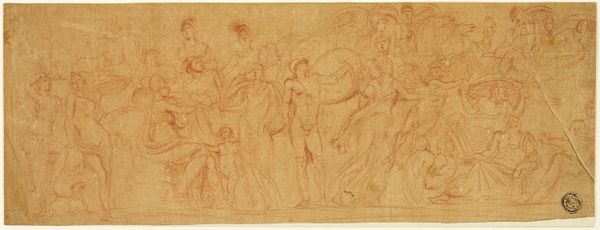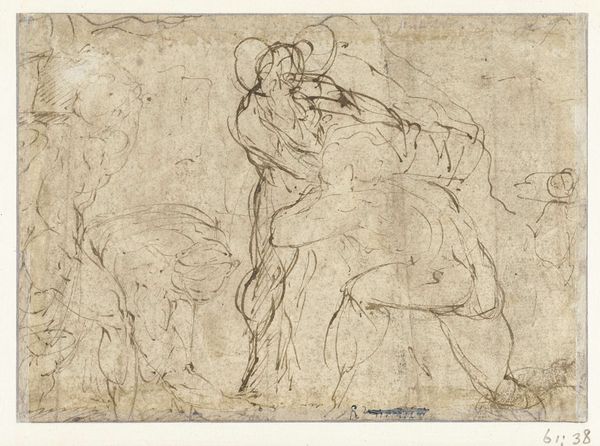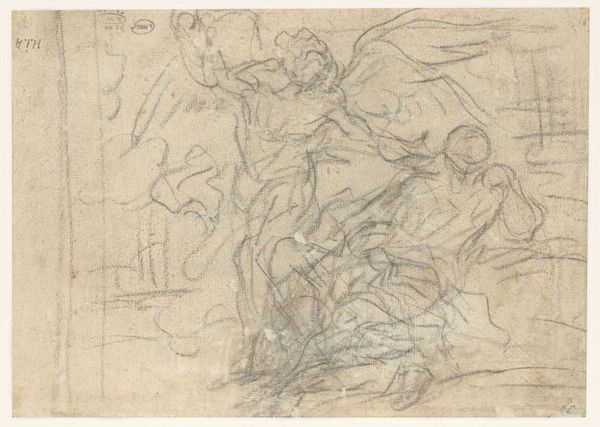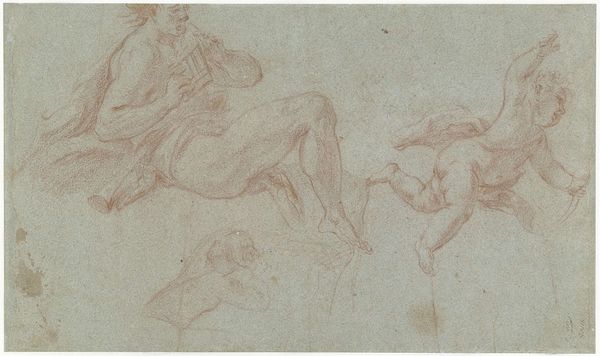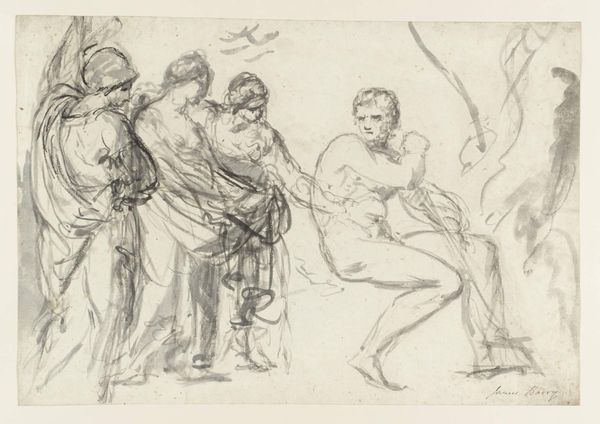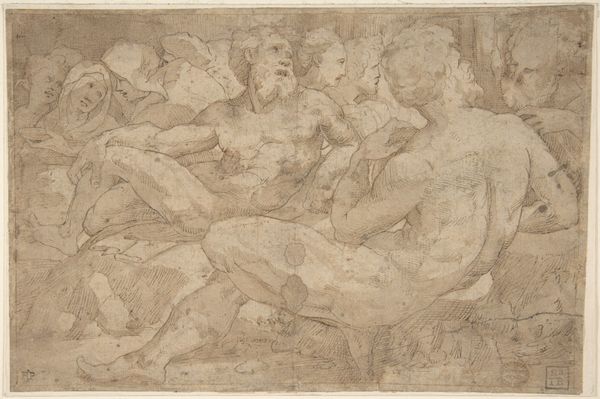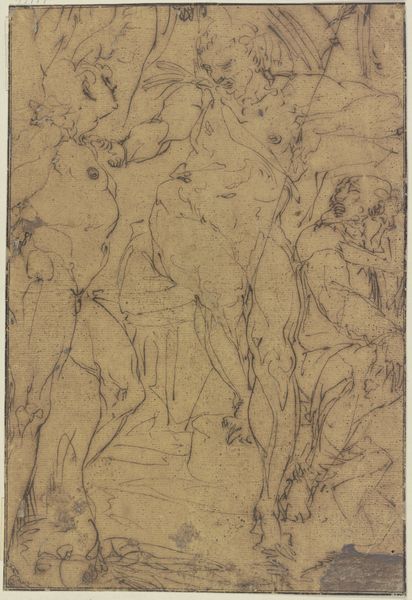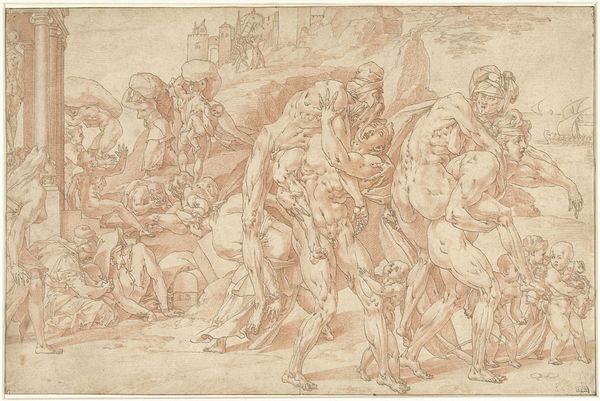
drawing, pencil
#
drawing
#
pencil sketch
#
figuration
#
romanticism
#
pencil
#
history-painting
Copyright: Public Domain: Artvee
Editor: So, here we have "Battle Scene with a Prisoner Being Bound, after Raphael," a pencil drawing by Eugène Delacroix from around 1823. It’s chaotic, right? Bodies twisted, energy crackling even in a sketch. It feels… raw. What leaps out at you when you look at this, what do you make of it? Curator: Raw is the word. But also, so beautifully restless, don’t you think? Delacroix wasn’t just copying Raphael; he was channeling him, almost wrestling with the old master’s energy. I see a young artist testing his own muscles, his own vision, against a giant. Notice how he focuses on the human form—not idealized beauty, but dynamic, straining bodies. You feel the effort, the struggle. And I suspect a young artist saw a bit of himself in it all. The "prisoner being bound," trapped by expectation maybe? Editor: That's an interesting read! It makes me wonder if Delacroix’s struggles with the canon echo in the way he's rendered these figures... Did Romanticism, with its emphasis on emotion, invite this sort of visceral response to earlier works? Curator: Absolutely! It was like saying, “The classics? Wonderful, but what do *I* feel when I look at them?” It’s a deeply subjective, almost confrontational approach. You know, it’s less about historical accuracy, and more about a present-day experience. In a way, Delacroix wasn't just sketching a battle scene, but was battling with art history itself. Who won, I wonder? Editor: Ha! A never-ending battle, maybe? This has really changed my perspective on copies. I’ll look at them differently from now on, searching for those hidden dialogues. Thanks for your insights! Curator: My pleasure! Art history, just like art itself, thrives on such passionate reinterpretations. And the conversation keeps going, it has to, right?
Comments
No comments
Be the first to comment and join the conversation on the ultimate creative platform.
